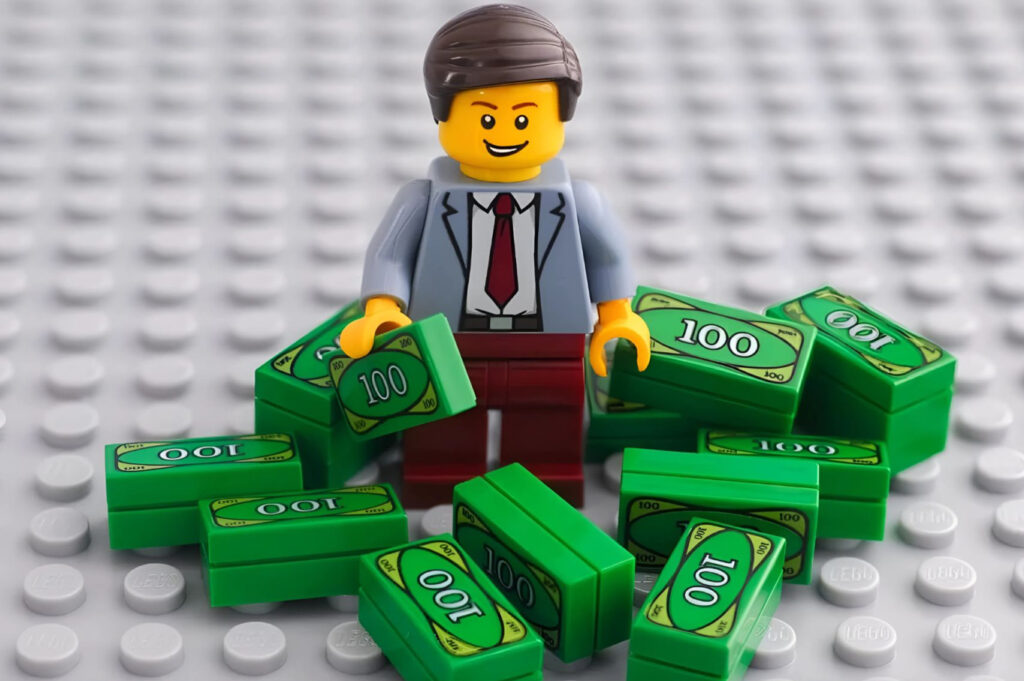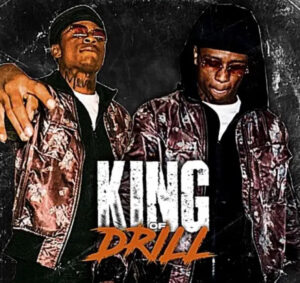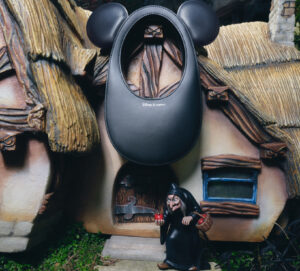In 2003, the LEGO Group, one of the most beloved toy companies in the world, found itself on the brink of collapse. The Danish brand, known for its colorful interlocking bricks and imaginative play, was hemorrhaging money and buried under a staggering $800 million in debt.
Worse than the numbers was the loss of identity. LEGO had overextended itself—launching theme parks, producing a dizzying array of sets, licensing its name to everything from video games to apparel, and chasing trends that diluted its core message of creativity through simplicity. The once-iconic company had become unfocused, bloated, and, by all appearances, obsolete.
It was a textbook case of how beloved brands lose their way: chasing scale at the expense of soul.
The Arrival of Jørgen Vig Knudstorp
Enter Jørgen Vig Knudstorp, a former McKinsey consultant with a sharp analytical mind and zero background in toy making. At just 35 years old, he became LEGO’s CEO—the first non-family member to hold the role. Instead of doubling down on growth, as many distressed companies do, Knudstorp made the counterintuitive choice to shrink.
He analyzed LEGO’s finances, operations, and—perhaps most critically—its values. What he found was a company buried in complexity: too many product lines, too many disconnected ventures, too many distractions.
Knudstorp’s diagnosis was simple: LEGO had to get small to get great again.
Radical Simplicity: Cutting to the Core
Knudstorp launched a turnaround strategy that was both brutal and brilliant. His core thesis was: LEGO must stop trying to be everything to everyone, and return to being one thing to everyone—a platform for open-ended, imaginative building.
Key moves included:
- Selling Off Theme Parks: LEGO offloaded control of its LEGOLAND parks to Merlin Entertainments. Though the parks bore LEGO’s name, they were capital-intensive, operationally complex, and not essential to the brick-based mission.
- Cutting 30% of Product Lines: LEGO drastically reduced its portfolio, eliminating underperforming or overcomplicated sets. Many had flashy features but lacked playability or creative flexibility.
- Ending Poor Licensing Deals: LEGO let go of licenses that didn’t enhance creativity or align with its brand—some video games, apparel, and film tie-ins were scrapped or delayed.
- Restructuring Teams and Reallocating Talent: Product developers were reconnected with LEGO’s core mission, and internal silos were broken down. New design standards were introduced to ensure all sets supported imaginative, hands-on play.
Wall Street was skeptical. Analysts warned, “You can’t shrink your way to greatness.” But Knudstorp wasn’t just cutting—he was focusing. He was aligning LEGO’s actions with its essence.
Five Years Later: A Brick-by-Brick Resurrection
The results were staggering. By 2008, just five years into the turnaround:
- LEGO had returned to profitability, posting record earnings
- Its operating margin rose from near-zero to double digits
- Iconic lines like LEGO City, LEGO Star Wars, and LEGO Technic were reborn under clearer creative direction
- The company reemerged as one of the most profitable toy manufacturers in the world
Knudstorp didn’t just save LEGO—he repositioned it for generational relevance. And he didn’t do it by chasing disruption. He did it by returning to the foundations—both figuratively and literally.
The Cultural Power of LEGO’s Focus
One of the enduring lessons of LEGO’s turnaround is that simplicity can scale, and constraint breeds creativity. Rather than diversifying endlessly, LEGO chose depth over breadth.
It doubled down on play systems with long-term value. It reinvested in its community—connecting with Adult Fans of LEGO (AFOLs), school educators, and parents seeking hands-on learning tools.
It allowed imagination to be the IP, rather than outsourcing creativity to outside franchises.
This focus created an ecosystem where every piece—whether a basic 2×4 brick or a complex Technic gear—had a place and a purpose.
LEGO in 2025: From Shrinking to Strategic Growth
Fast forward to today. LEGO is no longer just surviving—it’s thriving. Its product lines have expanded again—but this time with intention. Iconic partnerships with Star Wars, Marvel, Harry Potter, and Nintendo now exist within frameworks that support core play values. LEGO’s in-house themes, like Ninjago and Monkie Kid, are deeply narrative-driven yet still rooted in tactile construction.
Its architectural sets appeal to adult builders. Its Mindstorms and Boost lines connect to STEM education. LEGO Education has become a pillar in global classrooms.
And this year, LEGO’s new Formula 1 partnership marks a fitting continuation of its legacy—not as a gimmick, but as a testament to how precision, engineering, and creativity converge.
LEGO x Formula 1: Speed Meets Structure
The LEGO x Formula 1 partnership, launched in early 2025, introduces a new line of officially licensed F1 sets. These aren’t mere toys—they’re technical builds designed to mirror the exact engineering of F1 race cars, pit crews, and even paddock environments.
The flagship set, a 1:8 scale model of a Mercedes-AMG Petronas F1 car, boasts:
- Over 2,000 pieces
- Working steering mechanisms
- Removable V6 engine with moving pistons
- Fully functional DRS (Drag Reduction System) on the rear wing
This is LEGO Technic at its finest—complex yet intuitive, mechanical yet modular.
The partnership reflects LEGO’s ability to partner without losing itself. Formula 1, with its blend of speed, precision, and visual spectacle, aligns naturally with LEGO’s values of engineering elegance and buildable ambition.
Growth Without Drift: The Ultimate Business Paradox
LEGO’s journey reminds us that growth doesn’t always look like expansion. Sometimes, it’s a matter of subtraction before multiplication. It’s about making fewer bets, but placing them smarter. It’s about remembering your DNA and letting it lead.
In the era of hyper-growth unicorns, product inflation, and endless digital pivots, LEGO’s renaissance offers a counter-narrative. A brand built for children, saved by focus, and now admired by analysts, engineers, parents, and creators alike.
Lessons from the LEGO Blueprint
Business leaders, creatives, and entrepreneurs continue to study LEGO’s 2003–2008 strategy as a masterclass in strategic clarity. Here are the enduring takeaways:
- Know Your Core, Ruthlessly
If a product, campaign, or venture doesn’t serve your fundamental purpose, don’t justify it—cut it. - Make Complexity Invisible
Internally, LEGO became more sophisticated. But to the consumer, it felt simpler, more intuitive, more joyful. - Serve Fewer Audiences, Better
Rather than being everything to everyone, LEGO became essential to a few—children, educators, and creative adults—and then expanded outward with trust. - Use Partnerships to Amplify, Not Replace
Licensing can dilute a brand—but when values align, it can also magnify impact. The F1 partnership is a perfect example. - You Can Shrink Your Way to Greatness
If shrinking means removing the nonessential, refining the mission, and building a foundation for deeper value—it’s not shrinking. It’s maturing.
Final Bricks: LEGO as a Legacy Brand
The LEGO Group stands as a paradox in modern capitalism—a brand that scaled by simplifying, grew by focusing, and partnered without compromising. Its 2003 fall and resurgence wasn’t just about financial strategy—it was about identity.
And now, in 2025, that identity feels stronger than ever. Whether you’re a five-year-old making a castle, a teenager building a Technic car, or an adult rediscovering joy one brick at a time, LEGO invites you to create something out of almost nothing.
Because sometimes, in a world obsessed with “more,” the smartest move is building less—but better.
No comments yet.







